MMAC Freeway Expansion Plan Doesn’t Add Up
It's predicated on a theory of congestion and economic development that has no evidence to support it.
The Wisconsin Department of Transportation has a big decision on its hands in regards to the rebuilding of Interstate 94. Do they expand the urban freeway to eight lanes or modernize the current six lanes?
Meanwhile, the Metropolitan Milwaukee Association of Commerce (MMAC) is strongly advocating for the expansion of this corridor, but their reasoning seems to be based in fiction instead of fact.
MMAC’s Economic Development Theory Does Not Add Up:
MMAC tells Milwaukeeans that the 3.5-mile section of freeway that would be expanded to four lanes is the key to economic development in Milwaukee and that we must choose expansion to move Milwaukee forward. Nevertheless, they offer zero data and information as to what that economic output would be.
Not only is their economic modeling, or lack thereof, an outdated vision from the 1960s but it also does not add up. MMAC’s theory is that congestion due to growth will hamper our ability to grow. However, Milwaukee is one of the least congested major metro areas in the world (400th out of 416 cities) and at the bottom 10% of metros in North America for average traffic times. Being at the bottom of the country for congestion has not led to the economic or population growth they claim the financially unsustainable freeway expansion will lead to.
Quite the opposite is true; our population has been declining, according to the World Population Review. There are many contributing factors to this, but since the freeway expansions of the 50s and 60s, Milwaukee’s population has been on the decline. David Jasenski wrote in Urban Milwaukee that in 1960, the City of Milwaukee was the 11th largest city in the United States, according to federal census data (all of the following data is from federal census data). By 2020, Milwaukee had fallen to the 31st largest city in the United States. Is expanded freeway the answer to economic development or is it really about modernizing our economy and communities?
MMAC’s Congestion Theory Does Not Add Up:
MMAC does not seem to comprehend what causes congestion in this corridor. While there are numerous reasons for congestion – crashes, Brewer games, State Fair, construction, and rush hour – it is primarily because of the on and off-ramps during peak time usage. Adding one more lane does not solve these problems or commute times. Modernization of the freeway will help and that is why I support it, however, adding one more lane will not change your commute time during these traffic instances. A simple Google search will show you that adding a lane has never solved any city’s congestion problems. There are hundreds more examples. We should not fall subject to the definition of insanity: Doing the same thing over and over and expecting different results.
Chambers of Commerce in other cities like Omaha are starting to stand up against freeway expansion and even focusing on removal of urban highways where it makes sense. By the way the City of Omaha grew 19% over the last decade.
MMAC’s Financials Do Not Add Up:
MMAC’s latest opinion piece discusses how the money is already allocated for expansion. Those allocation dollars are taxpayer dollars. Instead, I would allocate those “transportation” dollars to alternative forms of transportation and fix other state highways in the city that need road diets and repair from past design mistakes resulting in today’s reckless driving and disinvested neighborhoods.
In addition, the money allocated is “just a couple hundred million” now, but nowhere do they talk about the hundreds of millions that will be needed in the future for maintenance and repair. Due to inflation, the expansion cost is sure to have skyrocketed. This tax and spending model advocated by the MMAC has to change. We must ask the Wisconsin DOT and political leaders to spend our money more effectively in our communities, not to drive out of them.
MMAC’s Future of Work Theory Does Not Add Up:
You can be as bullish on the city’s future as I am, but the future the MMAC is painting looks like the past. In a recent interview with a business publication, MMAC President Tim Sheehy talked about return to office statistics. He said in some cities over 40% of employees have not returned to the office. I have news for our business membership group: the future of work will not be office driven. It will be remote and hybrid-focused. This means traffic patterns will change from times of day, to days of the week, to where people work.
MMAC wants us to believe that everyone will flip a switch one day, that 9-5 work day will be back at 100%, and that everyone will only use I-94.
Autonomous vehicles, buses, and trucks will also impact the future of work. MMAC, our business membership organization, talks about how, in 30 to 40 years, not expanding will hurt us as a region. Autonomous shipping trucks, drones, and 3D printing will disrupt our commute, supply chain, and shipping demands. Trucks shipping products will be able to predict the most optimal times to move through cities. I can guarantee it will not be during our five to seven minute rush hour.
Conclusion:
During my time at NEWaukee, I have assisted and connected with moving thousands of people to Milwaukee. When I asked why they moved here, the answer was never freeway expansion. When I ask people why they left, it was never freeway congestion. A majority of the time, they moved to cities with a hundred times the congestion Milwaukee has. The MMAC’s opinion piece says we are losing companies and second offices to Chicago, IL. Have they not looked at the commute and congestion times of Chicago? They are moving to Chicago because of talent, talent, talent.
The future is all about talent and people moving to your city. Economic development will come from cities that have the best quality of life. People want safe and vibrant neighborhoods with walkability and connectivity.
Expansions of the urban freeways have been, and always will be, about displacement and separation of cities. Milwaukee has always been about the haves on one side and the have-nots on the other.
This specific project calls for removing Black homes and small businesses. Surprisingly, the organization backing Milwaukee as a Region Of Choice is fine with giving people of color in these neighborhoods no choice in exchange for expanding the divide in Milwaukee.
I am not surprised by MMAC’s opinion piece having no data to back up expansion, because there is none. Their goal is to play on the emotions of being stuck in traffic, and they have a bridge to sell you (using your money) that will solve all your problems. Do not be fooled, that bridge goes nowhere.
Jeremy Fojut, Host of Urban Spaceship.
More about the I-94 East-West Expansion
- Construction Starting On $1.7 Billion Interstate 94 Widening - Jeramey Jannene - Oct 15th, 2025
- Governor Evers approves first segment of I-94 East-West construction to begin in Milwaukee County - Wisconsin Department of Transportation - Oct 15th, 2025
- Transportation: Fix At Six Coalition Sues State, Federal Government Over I-94 Expansion - Graham Kilmer - Aug 20th, 2024
- WisDOT to host I-94 East-West Freeway Project public meetings - Wisconsin Department of Transportation - Jun 12th, 2024
- Open Houses Announced For I-94 Widening - Jeramey Jannene - Jun 6th, 2024
- ‘Fix at Six’ Group Wants I-94 Expansion Delayed For Civil Rights Report - Jeramey Jannene - Mar 20th, 2024
- Coalition Admonishes I-94 expansion Record of Decision - Sierra Club - Mar 20th, 2024
- Feds Approve Interstate 94 Expansion - Jeramey Jannene - Mar 8th, 2024
- Advocates condemn approval of I-94 expansion - Sierra Club - Mar 8th, 2024
- I-94 East-West Project Receives Federal Approval - Wisconsin Department of Transportation - Mar 8th, 2024
Read more about I-94 East-West Expansion here
Op-Ed
-
Unlocking Milwaukee’s Potential Through Smart Zoning Reform
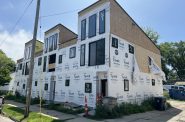 Jul 5th, 2024 by Ariam Kesete
Jul 5th, 2024 by Ariam Kesete
-
We Energies’ Natural Gas Plans Are A Mistake
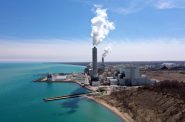 Jun 28th, 2024 by John Imes
Jun 28th, 2024 by John Imes
-
Milwaukee Needs New Kind of School Board
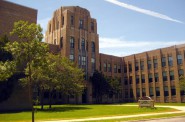 Jun 26th, 2024 by Jordan Morales
Jun 26th, 2024 by Jordan Morales
Transportation
-
MCTS Adds 28 New Buses
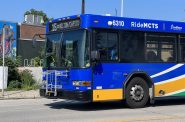 Jul 13th, 2024 by Graham Kilmer
Jul 13th, 2024 by Graham Kilmer
-
MCTS Designing New Bus Shelters
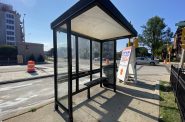 Jul 10th, 2024 by Graham Kilmer
Jul 10th, 2024 by Graham Kilmer
-
MCTS Updates RNC Bus Detours To Better Serve Downtown, Riders
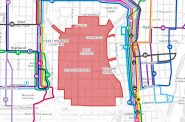 Jul 9th, 2024 by Jeramey Jannene
Jul 9th, 2024 by Jeramey Jannene

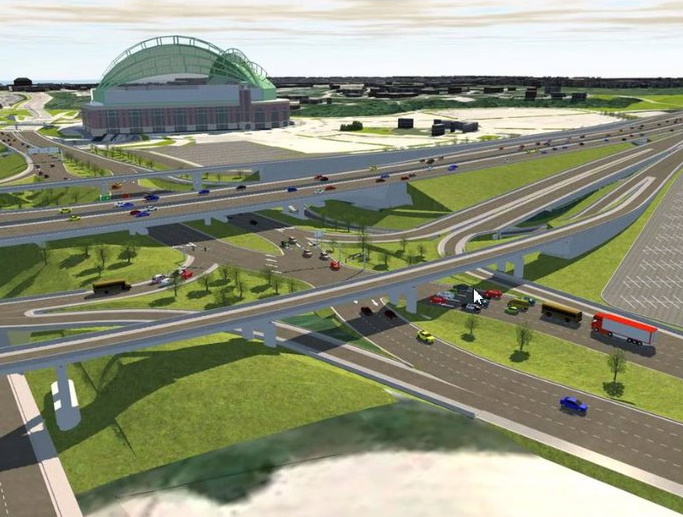
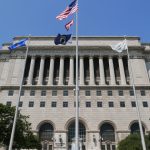


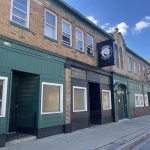


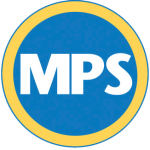

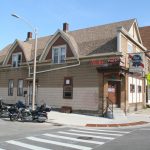
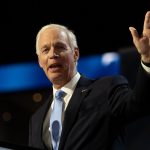
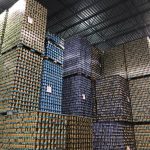

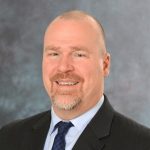

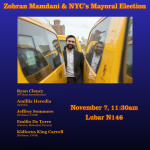





Excellent article Jeremy! Definitely agree that the congestion here is minimal, compared to other, large cities.
One good way to alleviate a lot of the I-94 congestion would be to eliminate the inside lane ramps. This simply leads to folks jumping on the freeway on one side, pushing across 3 lanes of traffic to the other side (within about a half mile) to exit on the other side. Remove that option and a lot of traffic jams and accidents would be prevented. Adding another lane, then allowing this issue to continue will simply make the problem worse.
Excellent article!
Lived in Chicago area for ten years and compared to MKE it was hell on earth to get around.
I don’t really understand what MMAC’s ‘hidden agenda’ is because the facts don’t support their “reasons”.
Solving traffic congestion by adding lanes is like solving obesity by buying bigger pants and a longer belt.
Jeremy, exactly! TransitRider, x100!
The MMAC “vision” is really an interesting one, an actual throwback to the 50s and 60s with no basis in the reality of today or the likelihood of tomorrow. The question remains…why?
Two answers I can think of: (1) brazen disregard for the city and (2) someone’s getting paid, somewhere.
It’s my understanding from attending the public meetings that either the six or eight lane option for rebuilding this 3 mile stretch of I-94 involves removing one house near 64th St. Not sure if the homeowner/ tenant is Black and whether or not they run a minority owned business for this property. My points is, get your facts straight. This project is about fixing a bottleneck that affects everyone.
I agree that past projects have impacted poor people more so than others. Otherwise we’d have a belt freeway though Oak Creek, Franklin, New Berlin, Brookfield, Menomonee Falls, Germantown, and Mequon. But that’s not justification for not fixing this short stretch that mostly traverses not residential areas.
But CraigR, every study that I have read comes to a similar conclusion.
Expanding freeway lanes does not materially change congestion.
I admit I don’t remember why.
And, the expansion would have a significant impact on the Story Hill neighborhood, a lovely residential neighborhood that deserves to stay the way it is. So, not just one house on 64th.
I am sorry that there is a bottleneck, but they happen everywhere on every freeway. Leave earlier for your destination or stay a bit later. It is shocking how much difference 15-20 minutes will make.
Drivers initially gravitate to expanded lanes rather than taking parallel routes such as Blue mound or Wisconsin avenue as many currently do. Eventually the expanded lanes have filled and really nothing has been accomplished. Akin to putting a bigger bag on a vac cleaner. Bigger bag and more dirt.
FIXATSIX
https://fixatsix.org/
kaygeeret, I did not seen much material difference in how Story Hill would be impacted 8 lanes vs. 6. Either way there will be some sound barriers which are certainly not there today. I understand the point that simply expanding roads is often problematic with regards to congestion. But the problem here is that eastbound at 68th it drops from four lanes to three, and westbound the same thing happens at the Stadium Interchange. Besides safety concerns with all this merging, you do witness some road rage as well. The air quality suffers in neighborhoods all along this route as traffic idles when it’s congested. Just acknowledge that staying at six lanes is as imperfect as expanding to eight.
CraigR,
The initial study called for removing eight homes and one business, majority minority-owned. However, they have done multiple studies now, so it’s hard to say which project they are moving forward with as they haven’t announced it.
The fixing of the onramps will help with delays but nothing will ultimately help with rush hour traffic.
Yes, after 68th it drops to 3 lanes. Go a bit further west; the freeway goes from four lanes to two lanes through the interchange which doesn’t seem to back up traffic. Also the further you get downtown the less traffic each ramp sees.
If both are problematic, why spend 200 million (before inflation) extra if it doesn’t solve the problem?
I actually drove this stretch today. I didn’t see a bottleneck. Because it wasn’t rush hour.
Widening the Stadium Interchange would be foolish, a waste of money, and a slap in the face to all the people who live near the interchange.
Congestion at the Stadium Interchange can be eliminated by managing the number of vehicles entering the system with traffic control lights at every on-ramp in Southeast Wisconsin…. when traffic is heavy, people have to wait before they can enter.
Blame the Department of Transportation for doing a lousy job controlling I-94 traffic, not the Stadium Interchange… and blame the “road building lobbyists” that control the DOT.